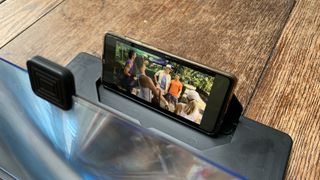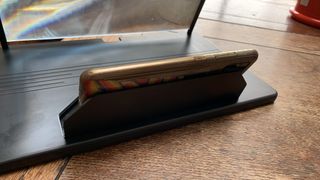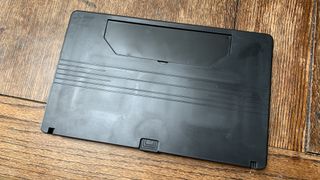I was recently on the lookout for a gift to give to a friend. This isn’t something I’m naturally gifted at, pardon the pun, but that’s no excuse for not buying anything. My friend would have been very disappointed.
When looking for presents, you know the drill. Grab the phone, and start scrolling. Gift lists for men, lists for women, presents for under £50. I hate how pigeonholed these things are, but for some reason, I still use them.
This time around, I found myself on Amazon. After a few pages of uninspiring results, I came across something that I had seen a hundred times before but always thought looked too good to be true, an accessory to turn some of the best phones into an improved movie-watching experience.
“It’ll be cheap, ineffective, and an absolute waste of money,” I usually thought. But regardless, I hit ‘Buy’, popped in my payment details, clicked ‘Order’, and the next day I was opening up a mobile phone video amplifier.
$20 challenge
This is the latest in a regular series of articles in which we test really cheap gadgets to see if they’re worth even the small price you’ll pay for them. Read them all here.
The kids love it when a package comes through the door, so I was immediately swamped. “What is it, daddy?” “Is it for me?” I’ve given up saying anything. It’s never for them; if I can sidestep the disappointment, then I’ll go for that. Anyway, they helped me unpack it and get it set up. It was so easy that even my young children could do it.
Do you just get what you pay for?
The screen itself pulls out and then hinges into position. The phone support is equally easy to install by simply pulling it up into location. Job done. Now, I have to say, it was at this stage that I started to lose any feelings of excitement that I might have once had.
I don’t know what I was expecting in a sub-$20 device, but I suppose you get what you pay for. The build quality is low with cheap parts all around, and the one part you definitely want to be built well – the magnifier screen – is thin, flimsy, and easily bent. This is not a device you can just throw around and expect it to last.

Initial feelings of disappointment
Fighting off the feelings of negativity, I then whipped out my phone, loaded up a YouTube video, and popped my device onto the support panel. With eager anticipation, I positioned the amplifier at the correct angle and couldn’t believe what I was seeing.
I pulled up the Amazon listing just to make sure I wasn’t losing my memory. It turns out I wasn’t. I was hoping, as advertised, that I would be enjoying a full screen home cinema experience. Unfortunately, the display only takes up around 60% of the magnified screen. This makes the phone bigger, for sure, but nowhere near as big as I was hoping.

I settled down to watch the video I had lined up and immediately realised that I had to do something about the lighting. Perfect lighting conditions are absolutely necessary. Watching it during the day or with any light source in the room will result in an annoying glare that makes the video unwatchable. This will really limit its application for a lot of people. Maybe if you spend a lot of time in hotels in the evening and can’t transport a laptop, then this could be a viable solution.
Was the screen magnification any good?
After being knocked back by the build quality, the flagrant false advertising, and the lighting restrictions, you might think I would have nothing good to say about it. But that would be wrong. After turning out all the light sources, I settled down again. I have to be honest; it took a little while to get used to, but I eventually forgot that I was watching it through a magnification device. I thought the black frame and large black handle at the top would be annoyingly distracting, but even they faded into the background.
One thing I didn’t get used to, though, was the slight blurring of the picture. The magnification screen is made up of hundreds of concentric circles that produce black circles on the magnified image. These, in turn, make the whole picture a little bit blurry. If you were expecting a blown-up version of your beautiful, pixel-perfect, clear phone screen, then you’ll have to readjust your expectations, I’m afraid.
The blurriness began messing with my head, and I ended up only managing around 10 minutes of viewing before my eyes started hurting. As someone who struggles with migraines, I didn’t want to take any chances. Watching any long-form videos or feature-length films was immediately off the cards for me.
The technology also means that if you can put up with the inherent problems, then it’ll only be a solo viewing experience. The frame and the magnifier dictate that you really need to be right in front of it to make it work.

Maybe the more expensive alternatives would produce better results, but I can’t be certain. Scrolling through the Amazon reviews, I was surprised to see so many positive reviews. People who give them to their kids because they don’t have TVs in their rooms, a husband watching football in his motorhome, and someone watching cooking recipes on it while cooking.
There’s clearly a market for these devices, but the whole experience just left me thinking, “Why don’t I just use my laptop?” I have a MacBook Pro 14-inch and even though it is a little bit bigger and heavier than the video magnifier, it delivers a far superior experience.